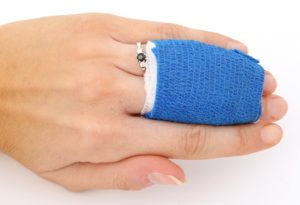This guest articles comes to us from Lara Smith. You can connect with her via Facebook & Instagram.
Moving is one of those things that, try as you might, you can’t avoid. It’s a complicated, tedious and expensive process, not to mention how detrimental it can be for your health. If you are not careful, a world of pain could be coming your way the next time you need to move. And if you don’t want to end up with a physical therapist at the end of the day, you need to familiarize yourself with the most common moving injuries, and the ways of avoiding them. Otherwise, your upcoming relocation could turn into an unpleasant experience, one that you will regret for many years to come.
Back injuries are the most common moving injuries
Nothing is as affected during the move as your back. It suffers the greatest impact when you are lifting heavy objects, such as sofas, dressers, TV stands, etc. All it takes is one moment of negligence for you to injure your back, after which months of recovery time will follow. And don’t for a second think that, just because you work out on a daily basis, lift weights and are in great shape, you are in no danger of becoming susceptible to moving injuries. The truth is that some of the most common moving problems begin with a person overestimating his or her capabilities and not being careful enough when doing the heavy lifting – which is a shame, as when it comes to back injuries, the technique is all that matters.
To avoid a trip to the doctor’s office, it’s best to prevent the most common moving injuries.
Types of back injuries
Back injuries can vary from the ones you will need only a few days of rest for to those that can get you to surgery. What they all have in common though is a great deal of pain that they inflict. Some of the most common back moving injuries include:
- Strained back
- Pinched nerves
- Herniated disk
- Serious spinal injuries, such as fractured vertebrae
Preventing back injuries
As previously mentioned, the right technique can save you from many, if not all common moving injuries. You must make sure you lift with your legs, not your spine. Keep your back straight at all times, and don’t hunch over the item you are trying to lift. Also, while lifting, use appropriate tools, such as moving straps and dollies. They will help take the pressure off your back and redirect it to other body parts. Finally, no matter how strong you are, you will need someone else’s help to lift heavy objects. Whether you decide to enlist your friends for help or find a moving professional in Greensboro, Miami, Pittsburgh, Sioux Falls (really, wherever you live), is up to you. Just make sure you don’t stand alone on your moving day with no one to help you carry the heavy burden of your relocation.
Injuries to fingers and toes are a real hazard
Imagine the following scenario – you are carrying that heavy washing machine together with your best friend. Something catches yours or his attention, and one of you two drops the machine. Whether that machine falls right on your toes or you try to hold onto it which, as soon as it drops with your fingers underneath it, you realize you can’t do, it doesn’t matter. What matters is that you will be quickly looking for physical therapy clinics because you injured your extremities. Before we tell you how to prevent this from happening, let’s take a look into different types of finger and toe injuries.
Some moving injuries can’t be fixed with a band aid.
Types of finger and toe injuries
There is one thing you must understand about the most common moving injuries – there is a big chance you will experience at least one of them. And most likely, they will be some of the most common injuries that happen to fingers and toes during a move. This is a piece of good news – you are about to see that the most common finger and toe injuries are nothing a band aid can’t fix.
- Cuts, scrapes, and bruises are what the majority of people that are moving experience.
- If you are unlucky, you could sprain your ankle, which could put you in bed rest for a few days.
- In a worst-case scenario, you could fracture a bone in your hand or leg.
Preventing finger and toe injuries
There are plenty of ways to prevent injuries to your fingers and toes, and you should use all of them, as there is no such thing as being too safe. For starters, make sure you are focused while carrying heavy objects and have a clear image of the path in front of you. Also, make sure you have a clear pathway from your doors to the moving truck. This way, you will prevent stumbling on something and dropping what’s in your hands. Moreover, never pack a box that is heavier than 50 pounds. Not only are you not a bodybuilder, but cardboard boxes are also not made to withstand weight heavier than that. Finally, never leave your fingers and toes exposed. Wear gloves and closed-toe shoes and you will decrease the possibility of cuts and scrapes to a minimum.
Muscle injuries to some degree cannot be avoided
When you are moving, your body engages in all sorts of physical activities. From pushing and pulling to lifting and twisting, you will get a workout like no other. That is precisely the reason why you will be sore days after your move. Luckily, in the majority of cases, you won’t have to seek pain treatment specialists, as you should be able to treat your sore muscles by yourself.
Types of muscle injuries
As mentioned, muscle injuries can range from those that won’t impair your daily movement to those that might be more malevolent.
- Muscle strains – can range from mild to severe and they happen when muscle fibers get torn.
- Muscle contusion – occurs due to trauma, when capillaries are damaged.
- Muscle cramps – are one of the most common moving injuries, and can be very painful and debilitating.
Moving differs from every workout you are used to.
Preventing muscle injuries
What is the first thing you do when you arrive at the gym and start getting ready for a workout? That’s right, you warm up your muscles! Since this will be a more strenuous activity than the ones you are used to, you should try even harder to stretch and get your muscles ready for heavy lifting. Also, you must listen to your body. When it tells you that the time has come for a break, listen to it. Don’t try to rush and get your move out of the way before nightfall. It’s better to work slowly but be as careful as possible with your health. Use all the moving tools you can get your hands on and don’t hesitate to let others help you.
Finally, sometimes the only way to avoid the most common moving injuries is hiring relocation professionals. They don’t just decrease the risk of you getting injured, but they annihilate it. After all, how are you supposed to strain your back when you are not the one doing the heavy lifting?
Latest posts by Editor (see all)
- Featured Clinician: Anthony Maritato, PT - June 2, 2023
- Colleen Rapp Wins Friend of Private Practice Award - November 29, 2022
- Featured Clinician: Braylon T. Warrior - September 20, 2022
- Featured Clinician: David Friedberg, PT, DPT - September 1, 2022
- Featured Clinician: Ulrick Jean-Pierre - February 7, 2022




